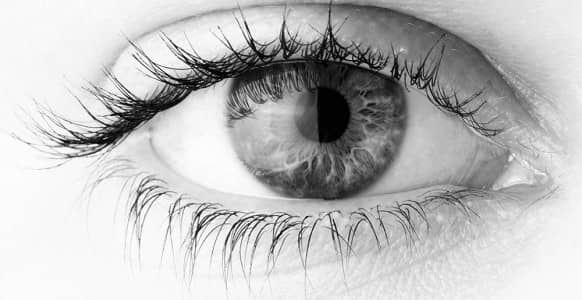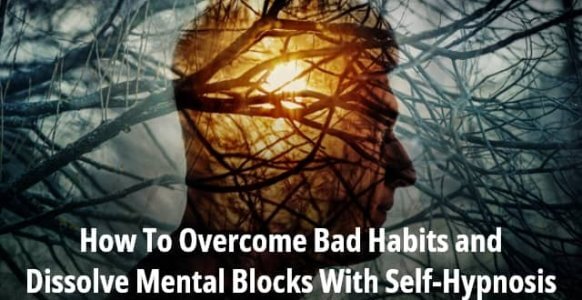
The hypnotic gaze induction is a powerful piece of language that requires more thought behind your actions and composure rather than words.
The hypnotic gaze induction can and will be used in many instances to run through the 4 Stage Protocol with many of your subjects. This is a skill that once learned will absorb attention, bypass critical factor, provoke an unconscious response and set the scene for you to direct that response.
When you learn to do it correctly it really takes care of the trance induction process. You must keep an eye on, no pun intended, the sub-communications you send and go first in the feeling of good will. You want to transmit through your body language that you mean for this to be a pleasant experience of mutual cooperation.
Finally, you also need to be aware of the direct or indirect approach to take with each different individual you are working with. For now, you should be concentrating on the more direct method of the hypnotic gaze but as time goes on you will be able to be less direct in this skill.
Keep in mind that you need to have your confidence up and your insecurities checked at the door. All of this will help insure the best hypnotic gaze environment for both you and the person you are working with.
Now you have heard and read in depth all about what the hypnotic gaze is and what it will do for you as a hypnotist. Next, in this article, you will really dive into what this technique can do for you. You will travel along the lines of what the hypnotic gaze induction procedure is: how it starts, where it goes, and where it ends.
You should not be surprised when the first step of this induction as with any induction is ‘going first’. The things you will want to go first in are the projection of feelings like comfort, ease, and good will. You will use instant rapport techniques to project these feelings and states of being to your listener through your sub-communications.
Of course, you want to do this because these are the feelings and attitudes that are necessary for your subject to feel upon entering hypnosis. You also want to go first in these matters because you also need to enter a sort of trance. You will want to access an outside trance whereas your subject will be going into an inside trance. These are both very different and necessary in an induction.
The outside trance that you will be entering into will not be a picture of you slumped in your chair feeling all glossy and glazy. The way you go into an outside trance or a ‘hypnotist’s trance’ is to expand yourself into the room.
Open up your senses. Expand your vision, hearing, and feelings into the room and really have a sense of open awareness. Your attention should be focused outward and you will have no trouble functioning in your environment.
In doing all this you really have just set up the environment for your subject, yourself and the art of hypnosis. You have instilled a sense of comfort, ease and good will between you and your subject and projected it into your environment as well using your instant rapport skills.
The next step in the hypnotic gaze induction is to focus your hypnotic gaze. You will do this by first making eye contact. As you maintain that eye contact, make sure you are aware to keep the sense of good will and comfort flowing from your eyes.
You can do this by making them ‘soft’ or through ‘smiling eyes’. No cold hard forced stares just a soft focus with gently upturned corners of the eyes. This is a comfortable non intimidating feeling. It may be helpful to remember this is a gaze not a staring contest.
As you start your induction you need to start on the outside and slowly move inside and then beyond. This means you will start with the eye contact, and then slowly shift your gaze to looking within them. It will seem as though you are looking 3-4 inches inside their head. This will sub-communicate that you are going deeper within them and they should do the same.
After that you will again want to shift your gaze to looking at the back of their head and finally completely through their head as if you are focused on an object 3-4 feet directly behind them; as though you are staring right through their entire head.
What you are doing in all this shifting, focusing and re-shifting of your gaze is telling them with your unconscious communications that it is time to go within. The deeper they see you go within them the deeper they will unconsciously recognize they need to go.
This is a very important part of the induction and you must practice it and learn it well.
You can practice this with different objects or with people you are conversing with on a regular basis. Practice the focus and shifting of your gaze, see how it changes and changes within you. Get comfortable with it.
The third step in this induction is to use a hypnotic tonality. This should be an easy step to put into action as you have probably been practicing this from the beginning of your hypnosis study. To use your tonality you will use your voice to slow everything down and create space in your language.
Tonality in the hypnotic gaze induction should be soft, calm and soothing. Think of how you would console an injured child or animal.
You want to project yourself as trustworthy and exhibit kind calming sounds in your voice. You will use these as you speak to your subject and as you gaze at them.
The fourth and final step is to describe the trance experience. This is where you begin to really verbally let your subject know they are entering a trance. You will want to remember all the signal recognition signs so you can describe in detail to the person what is happening or what should be happening to them.
As you describe these signals it will let the person you are working with know that they are entering a trance. The types of subjects to focus on here are the relaxation of the face, muscles and eyes, as well as changes in their breathing and the way they perceive their environment. Any of the trance signals in signal recognition are acceptable topics in this phase of induction.
Be sure to keep a good focus on your subject as you do this. If they actually begin to do any of the things you are describing or other trance signals you will want to take advantage of describing those exact things back to them in order to reinforce the trance induction.
This creates a strong double feedback loop; you tell them what they should be doing, they do it, you describe it back to them, so on and so forth. This is a strong sign that they are going into a trance.
Ensuring all of these steps are taken and recognizing all the responses in the hypnotic gaze induction is the recipe for a very powerful induction into a hypnotic trance.










![[ADVANCED GUIDE] How To Master Hypnotic Regression Therapy - Part I: Essential Principles To Profoundly Transform Your Subject’s Emotional Trauma [ADVANCED GUIDE] How To Master Hypnotic Regression Therapy - Part I: Essential Principles To Profoundly Transform Your Subject’s Emotional Trauma](https://hypnosistrainingacademy.com/wp-content/uploads/2016/09/hypnotic-regression-therapy-essential-principles.jpg)

![Yogic Breathing For Hypnosis: 3 Easy Techniques To Ground & Relax Your Clients Before Inducing A Hypnotic Trance [Includes Infographic] Yogic Breathing For Hypnosis: 3 Easy Techniques To Ground & Relax Your Clients Before Inducing A Hypnotic Trance [Includes Infographic]](https://hypnosistrainingacademy.com/wp-content/uploads/2019/05/yogic-breathing-for-hypnosis.jpg)
